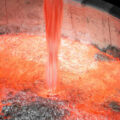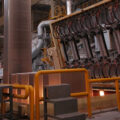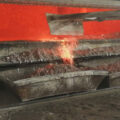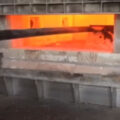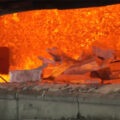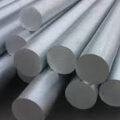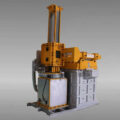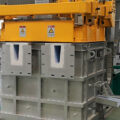Temperature control in aluminum smelting is very important for aluminum foundry. The melting temperature is too low, which is not conducive to the dissolution of alloy elements and the discharge of gases and inclusions in the refining process. This increases the tendency to form segregation, cold separation and casting shortage, and the castings cannot be properly compensated due to insufficient heat in the riser. All aluminium alloys shall have a melting temperature of at least 705 degrees and shall be stirred.

Temperature Control in Aluminum Smelting
If the melting temperature is too high, energy will be wasted. In addition, the higher the temperature, the more hydrogen absorbed, the coarser the grain size, the more serious the oxidation of aluminum, and the more serious the combustion of some alloy elements. This leads to the decline of mechanical properties, deterioration of casting properties and mechanical properties, weakening of modification effect and reduction of air tightness of castings.
Practice has proved that aluminum water can be quickly heated to a higher temperature and stirred reasonably to promote the dissolution of all alloy elements (especially refractory metal elements). After removing the scum, the pouring temperature decreases. In this way, the degree of segregation is minimum and the amount of hydrogen dissolved is less, which is beneficial to obtain uniform and dense castings with high mechanical properties.
Since the temperature of aluminum melt is difficult to judge by naked eyes, temperature measuring instrument should be used to control the temperature no matter what type of furnace is used. Temperature measuring instruments should be inspected and maintained regularly. The thermowell should be cleaned regularly with wire brush and coated with protective paint to ensure the accuracy of temperature measurement results and prolong the service life.
In order to reduce the absorption of molten aluminum and the dissolution of oxides and iron, the residence time of molten aluminum in the furnace should be shortened as far as possible and the melting should be carried out quickly. Aluminum usually uses a refining agent to remove gas and is contained in molten aluminum. From the beginning of melting to the completion of pouring, sand casting should not be more than 4 hours, metal mold casting should not be more than 6 hours, and die casting should not be more than 8 hours.
In order to speed up the melting process, reheating materials with medium low melting point and Al-Si master alloy should be added first to form molten pool at the bottom of crucible as soon as possible. Larger recycled materials and pure aluminum ingots are then added so that they can be slowly immersed in the gradually expanding bath and melt rapidly. The alloy was added to melt completely and then melted. Finally, reduce the temperature to reduce the combustion loss.

